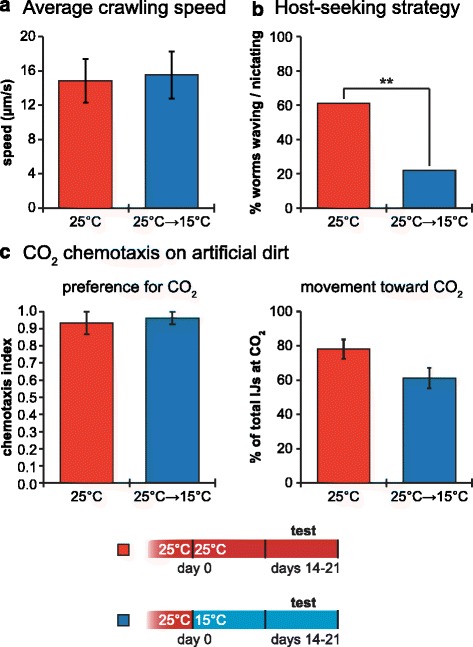Fig. 6.

Steinernema carpocapsae exhibits temperature-induced changes in host-seeking strategy. a Temperature changes did not affect the crawling speeds of infective juveniles (IJs). The crawling speeds of day 14–21 IJs that were either maintained at 25 °C, or temperature-swapped from 25 °C to 15 °C on day 0, were not significantly different (Mann–Whitney test); n = 26–31 IJs for each condition. b Temperature changes altered the host-seeking strategies of IJs. Day 14–21 IJs that were maintained at 25 °C showed a greater propensity to nictate than IJs that were temperature-swapped from 25 °C to 15 °C on day 0. ** P < 0.01; Fisher’s exact test; n = 36 IJs for each condition. c Temperature changes did not alter CO2 chemotaxis behavior. CO2 attraction for IJs that were either maintained at 25 °C, or temperature-swapped from 25 °C to 15 °C on day 0, was not significantly different (left graph, unpaired t-test). In addition, the percentage of the population that migrated toward the CO2 was not significantly different for the two treatment conditions (right graph, unpaired t-test); n = 6–8 trials for each condition. For all graphs, error bars represent standard error of the mean (SEM). Mean, n, and SEM values for each assay are listed in Additional file 7: Dataset S1
